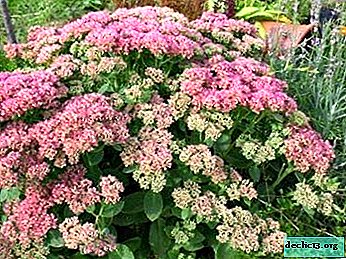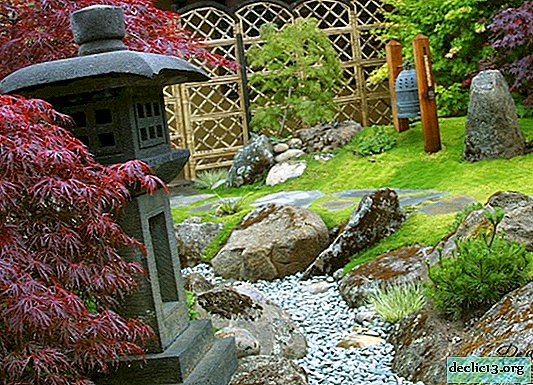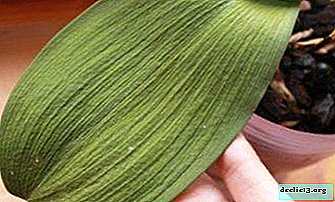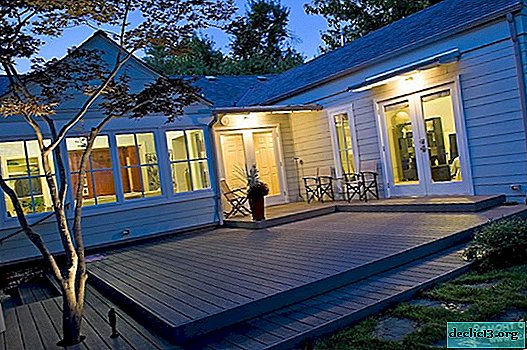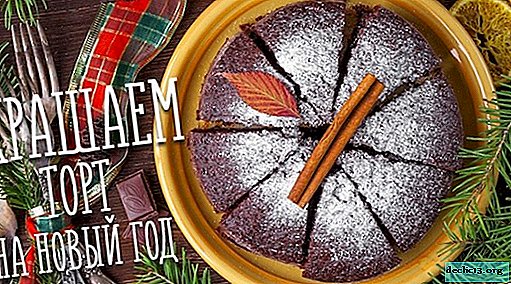Unpretentious long-liver with leaves of sunset tones - Crassula Sunset

Crassula ovata, it is also an ovoid fatty, it is also an oval fatty. This plant can be safely called one of the favorite among fans of home flora.
This bush or tree with its thick shiny leaves looks very nice on the windowsill. Bred hundreds of varieties and varieties of oval fat.
The article will focus on the variegate form of "Hammels Sunset", as well as how to properly care for and propagate the plant at home.
Description of variegated form
Crassula ovata f. variegata cv. Hummel's Sunset (Crassula ovata Hammels Sunset variegate) is one of the varietal variations of the oval fat. This semi-herb bush is a South African native. The species belongs to the genus Tolstyanka and the Tolstyankov family. Crassula in nature reaches a height of 180 centimeters. With good home maintenance - up to one meter. The stems are initially soft, juicy, green, then lignified and change color to brownish. Abundantly on the stems are rosettes of fleshy, glossy wedge-shaped leaves on short petioles.
Crassula ovata - a succulent plant, accumulates water in its own tissues. This shrub blooms with small white or pink-tinted "starlet" flowers. Sometimes the flowers of Crassula Sunset are brighter (with a slope in blue or red).
The name Sunset ("sunset" in English) poetically reflects the appearance of the variety form. A plant looks very attractive, the leaves of which harmoniously "gathered" a few gentle sunset tones. In the middle they are green, closer to the edges they become a creamy yellowish color. Framing the leaves of the money tree - in pleasant red shades.
Important! The red "stroke" of the leaves may fade and turn green if the plant lacks sunlight. Some experts believe that sunset reaches the maximum decorativeness of Crassul ovate in greenhouse conditions.Crassulas - unpretentious succulents, easy for home maintenance. It is enough to follow certain simple rules, and the fatty sunset will successfully live on your windowsill. Crassula ovata is a perennial long-lived: to grow two and a half decades and even more - for her it is in the order of things.
Home Care
| Lighting | It is required to provide a lot of natural daylight at any time of the year. Be careful: direct sunlight, falling on the leaves, can burn them! If you place the plant on the southern windows, you can arrange a slight shading if necessary. When there is not enough light, Sunset can discard foliage. |
| Temperature | This variety does not like sudden and frequent temperature changes. In the spring and summer months he is well at 20-25about. During wintering - preferably not higher than 13-15about. Better - lower (minimum border about 5about FROM). |
| Location | It is good if the windows face the west or east side. In summer, you can take Crassula ov sunset to a balcony well-lit by the sun, a terrace and a courtyard. Fresh air is only good for her. But drafts can hurt her. |
| Watering | Like any succulents, Crassula ovata sunset needs very moderate watering. The golden rule is better to underfill than to overfill. During the warm season, watering is required no more than a couple of times a week. Do not rush to water if you see dry earth in a pot: leave everything as it is for a few days. During a cold wintering, the grassroots are watered no more than once a month. If it was not possible to organize a temperature drop in the fall-winter, then we water more often. |
| Air humidity | South African succulents are drought tolerant. An excess of dampness to the crassulas is completely useless. Leaves should be periodically wiped with a damp cloth from dust, sprayed from a spray bottle. |
| Top dressing | Only during the period of active vegetation of the plant (spring-summer). Use special fertilizer for succulents and cacti. You can apply two to three times a month after watering. Six months after transplantation, feeding will not be necessary. |
| The soil | Crassula prefers soils with low acidity, loose, well-drained. The simplest thing is to go to any flower shop and purchase soil there that is specifically designed for cacti and succulents. The recipe for "homemade" soil: part of the turf land - part of the leaf land - part of peat - part of the well-washed river sand. For drainage, add small pieces of broken brick and a bit of activated carbon (prevention of root rot development). |
| Pruning | It is carried out in order to form a beautiful, evenly developed, symmetrical crown of the plant. To create a rounded bush, cut off the shoot from the top. We periodically arrange the crown, shortening the overgrown shoots. It is recommended to cut the shoot after the fourth pair of leaves on it. Another option is pinching a growth bud located between a given pair of leaves. |
Breeding
 Sunset is most often propagated by leaves and cuttings. (which can be obtained with the planned pruning).
Sunset is most often propagated by leaves and cuttings. (which can be obtained with the planned pruning).
Cutting is the easiest and most convenient way:
- Truncated stems about ten centimeters long should be slightly dried in the shade, then rooted in a glass of water (adding charcoal).
- After the appearance of the roots - planted in a pot in size.
- From above we cover the crassula with a transparent plastic cup.
- We periodically water and aerate the “greenhouse”.
- The cutlery released shoots - remove the glass.
Another interesting method of reproduction is sprouts with aerial roots that appear on the wood stems of the Crassula. Such a process with fresh living roots can be broken off and immediately planted in the ground.
It’s not worth it to transplant the Sunset Crassula too often. In the first years of her life, when she is actively developing, you can move it once a year into a larger pot. Then - no more than once every three years. This is usually done in the spring, but not forbidden to transplant in the fall.
reference! The pot for rosula is not too deep, but wide enough. After all, its root system does not grow in depth, but rather in breadth. The plant is removed from the pot with a lump of earth on the roots and together with it is placed in a new container.Possible problems
Flowering home Crassula rarely pleases the owners. There is a likelihood that it will not bloom at all, even reaching a respectable age. If you want to see flowers on your favorite plant, spend cold winters and follow all the rules for caring for a fat girl.
Similar plants
- Crassula hobbit. Crassula the hobbit. A variety that surprises with an intricate, pleasant appearance. Fleshy leaves seem to be folded into tight tubes. Like Crassula ovate sunset, the leaves are at the ends of a soft reddish hue.
- Crassula mix. Crassula mix. Abundantly growing shoots are decorated with elongated leaves. At the edges of which - a soothing shade of purple. They want to admire.
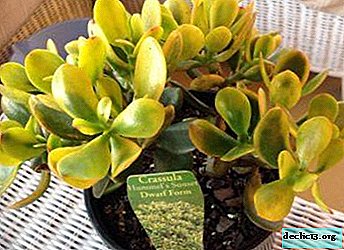 Crassula perforata. Crassula perforate (perforated). Another representative of the same family. Equally juicy, fleshy leaves. However, this time - collected in magnificent green "roses".
Crassula perforata. Crassula perforate (perforated). Another representative of the same family. Equally juicy, fleshy leaves. However, this time - collected in magnificent green "roses".- Sempervivum tectorum. Lining roofing. The famous "stone rose". This species is characterized by a rich varied color of leaves (the same red, green, cream tones, like sunset)
- Echeveria lilacina. Echeveria lilac. Another succulent for lovers of perfect forms (rosette of leaves in the form of a pink flower) and picturesque colors. If the sun is enough, then the leaves of Echeveria can surprise with lilac, pinkish shades.
Crassula ovata sunset is an interesting variety that is definitely worth adding to your collection of succulents. It is simple to care for, and looks very original, colorful and attractive.

 Crassula perforata. Crassula perforate (perforated). Another representative of the same family. Equally juicy, fleshy leaves. However, this time - collected in magnificent green "roses".
Crassula perforata. Crassula perforate (perforated). Another representative of the same family. Equally juicy, fleshy leaves. However, this time - collected in magnificent green "roses".